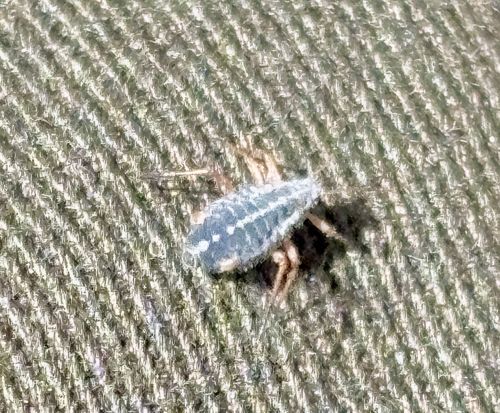Woolly Aphid
Scientific Name: Eriosomatinae (subfamily, specific species cannot be determined from image)
Order & Family: Hemiptera, Aphididae (subfamily Eriosomatinae)
Size: Typically 1-3 mm (excluding the waxy secretions)

Natural Habitat
Found on various plant parts, including branches, twigs, leaves, and roots; often associated with their host plants, which can include trees (like apple, elm, cedar) and shrubs. The 'wool' helps protect them from predators and pesticides.
Diet & Feeding
Plant sap. They are phytophagous, meaning they feed by piercing plant tissues with their stylets and sucking out the sugary sap. This can lead to stunted growth, discoloration, and defoliation of the host plant.
Behavior Patterns
They often live in colonies and produce a characteristic white, waxy, cotton-like covering, giving them their 'woolly' appearance. This waxy secretion is a protective mechanism. They can reproduce rapidly, often parthenogenetically (without mating), leading to quick population growth. Some species migrate between different host plants throughout their life cycle.
Risks & Benefits
Risks: Can be significant pests in agriculture and horticulture, causing damage to fruit trees, ornamental plants, and timber trees by weakening the plant, distorting growth, and transmitting plant viruses. Their feeding can also lead to the production of honeydew, which can encourage the growth of sooty mold. Benefits: Generally, minimal to no direct benefits, as they are primarily considered pests. In some very specific ecological contexts, they might provide a food source for natural predators like ladybugs or lacewings, but their overall impact is usually negative from a human perspective.
Identified on: 9/21/2025